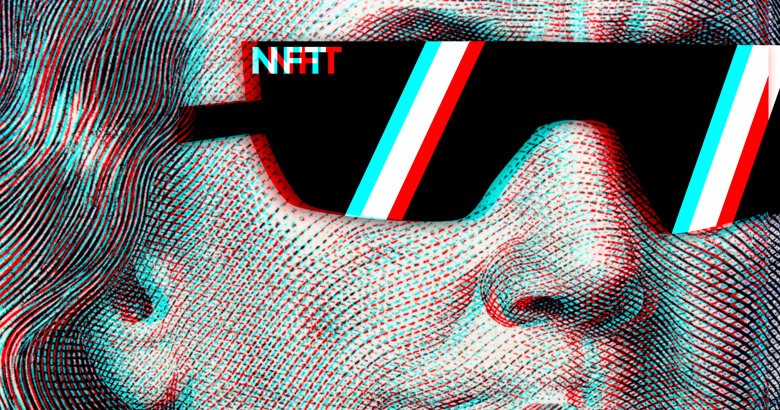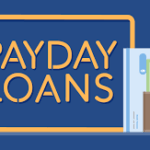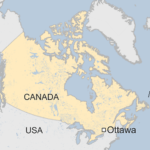NFT Collectors.
On a frigid New York night late this earlier February, NFT followers gathered at Sotheby’s. Youthful collectors in hypebeast matches mingled as they plucked champagne flutes from silver platters, whereas others listened attentively to rapper Ja Rule as Seedphrase, a widely known NFT collector, deejayed.
All individuals took the likelihood to neighborhood prior to the primary occasion, that’s, most people sale residence’s first-ever night sale dedicated to NFTs: a bundle of 104 CryptoPunks estimated to promote for $20 million to $30 million.
Solely a yr earlier, Christie’s had offered a Beeple NFT for $69 million, beginning a frenzy that hadn’t nonetheless let up. Now one completely different historic sale was all through the nook, and people at Sotheby’s that night time had been hoping to witness it.
Nevertheless the beginning time handed, after which, moments later, a rep launched to a collective gasp that the sale had been canceled: the vendor had pulled out. It was like a Rolling Stones dwell effectivity the place Mick and Keith not at all bought on stage.
The sale was anticipated to inject some much-needed vitality correct proper right into a market that had become unexpectedly limp. Solely months prior to, in November, Bitcoin had soared to almost $70,000, a mannequin new excessive for the abroad money that offered a proxy to your complete crypto market; nonetheless by late January, it had dipped to $35,000.
These contained in the NFT scene had been hoping the dip was merely one completely different hiccup in a market that had rallied as soon as extra from worse over the course of 2021’s golden yr for crypto.
So when the nameless vendor of the Punks, who on Twitter goes by the deal with 0x650d, pulled out, individuals waved off the mounting nervousness.
0x650d himself framed his choice as a recommitment to his assortment, tweeting, “nvm, determined to hodl”—crypto vernacular for “protect”—accompanied by some memes about rugging (i.e., pulling out the rug from beneath) Sotheby’s.
(As a results of it turned out, he wanted his Punks as backing for an $8.3 million mortgage, which apparently bigger than made up for the prices related to the rug pull.)
By the aim of the afterparty—afterparties being de rigueur for practically one factor contained in the crypto world—everybody figured one completely different sale would come alongside quickly to reinvigorate the market.The crypto market had been fluctuating for a yr—what went down would come as soon as extra up.
This time, nonetheless, was utterly completely completely different. The subsequent morning, an ominous refrain of research alerts rose up from iPhones: Russia had invaded Ukraine. The world was abruptly a particular place, and an vital cryptocurrencies didn’t bounce as soon as extra; they saved sliding.
By mid-June, when the work NFT group hit Paintings Basel in Switzerland, the worldwide crypto market had misplaced bigger than 60 p.c of its worth, with Bitcoin dropping beneath $20,000 for the primary time since late 2020. In mid-July, OpenSea, an vital NFT market, laid off 20 p.c of its employees, its CEO affirming to anybody who hadn’t nonetheless gotten the memo—or didn’t wish to give it some thought—that we’d entered “crypto winter.”
None of this might need rattled anybody inside the everyday work world if NFTs hadn’t, over the earlier yr, made a gradual incursion into its hallowed halls. Galleries had been launching NFT platforms and taking up NFT artists. Established artists had been preparing for drops.
Museums had duties on their calendars. Nevertheless these in each the work world and NFT scene positioned on a courageous face: if one’s involvement with NFTs was about work and not at all a money seize, then the market should be of no concern. Really, your complete NFT ecosystem thrummed with the same message: that is the second to separate the speculators from the true believers.
“I’m glad that it crashed. It occurs in each interval that the market shrinks, and a handful of artists succeed and change ahead. The extraordinary artists stick spherical and become bigger and higher,” New York vendor and collector Alberto Mugrabi, whose assortment consists of Warhol, Basquiat, and now Beeple, instructed ARTnews.
Nevertheless for plenty of collectors, the query stays: Are the heavy hitters contained in the NFT area even artists? And are NFTs work?
Unbeknownst to many, the standard work world is woven into the historic earlier of NFTs. The know-how was coinvented by an artist—digital artist Kevin McCoy—as a method of monetizing digital artworks, and unveiled in 2014, on the New Museum in New York, as a part of Rhizome’s Seven on Seven convention.
With the invention, McCoy was trying to resolve an issue he and completely completely different digital artists saved rising in opposition to.
“We would deal with happenings and make work for biennales, nonetheless the problem we weren’t doing was interacting with collectors or making product gross sales,” McCoy instructed ARTnews.
McCoy acquired proper right here to grasp that digital work accumulating wanted a technical reply; and thus the NFT was born. Using blockchain, digital belongings had been linked to a wise contract—an interactive, unfalsifiable receipt repeatedly up to date with compulsory info, equivalent to who offered the NFT to whom, and for the way in which in which hundreds. McCoy was shocked when digitally native artists, who didn’t normally have an work faculty background or curiosity inside the everyday work market, jumped on NFTs.
“I didn’t come up contained in the reblog, repost, like, and share surroundings,” he talked about. “Nevertheless I perceive how individuals would see NFTs through this lens.”
Throughout the intervening years, utterly completely completely different programs of NFTs have emerged: collectibles like NBA Prime Shot, PFP (profile pic) collections like CryptoPunks and Bored Ape Yacht Membership, and a 3rd, additional nebulous class—the work NFT. Included contained in the work NFT class are generally digital artists like Beeple, who create single-edition artworks, and generative work, which is in the marketplace in huge fashions and is the outcomes of an artist’s superior, inventive algorithm.
Thrown into this remaining class are the fairly a number of makes an strive that skilled artists like David Salle, Takashi Murakami, and others have made to enter this bizarre new world.
Michael Bouhanna, a specialist in fashionable work and cohead of digital work product gross sales at Sotheby’s, has acknowledged two sorts of collectors contained in the digital work world: individuals who have an curiosity contained in the work, and individuals who have an curiosity inside the cash. “I see many similarities between our typical [fine art] collectors and collectors who purchase digital work, equivalent to generative work,” Bouhanna instructed ARTnews.
“They’re passionate relating to the motion, the methods, the background.” Nevertheless relating to the collectors who purchase an vital PFP duties, like CryptoPunks, there’s a particular focus. “It’s additional speculative—they’re attempting intently on the flooring worth. It’s pretty a bit relating to the monetary choice.”
However, the latter kind of collector has come to stipulate what’s and isn’t invaluable on the NFT market.
Even the success of established artists’ collections has thus far depended so much a lot much less on their work world cred than their performance to attraction to native NFT collectors, principally youthful males with tech and finance backgrounds who didn’t buy work till NFTs acquired proper right here spherical. Nevertheless there are forces contained in the work world trying to vary the stableness of vitality.
Public sale properties had been the primary work world establishments to journey the NFT wave—and, up to now, have been the proper at it. When the value of cryptocurrencies skyrocketed 300 p.c in 2020 and saved climbing, Christie’s started arranging NFT product gross sales. And why not?
That that they’d already began promoting skateboards and sneakers, and that very same crowd seemed to be on this new class of collectible. In March 2021, Christie’s made historic earlier—and maybe single-handedly launched the yr of the NFT—when Beeple’s one-of-one NFT Everydays:
The First 5,000 Days offered for $69.3 million to Vignesh Sundaresan, moreover known as MetaKovan. The sale made Beeple the third-most-expensive residing artist on the earth.
Many contained in the area credited that sale with giving them the vainness they wanted to enter the dangerous crypto and NFT market. PFPs, too, began setting information. In June 2021, Sotheby’s offered the bizarre CryptoPunk 7523 for $17 million. In November, Christie’s offered Beeple’s HUMAN ONE NFT to Swiss collector and enterprise capitalist Ryan Zurrer for $29 million.
Whereas the product gross sales signify the very best of the market, a great deal of the thrill and worth was constructed on Twitter, the place artists and the technorati marketed duties, hyped one another up, and talked nonstop, digitally replicating the mania of an ’80s inventory purchasing for and selling flooring.

As in distinction, the work world’s reluctance to leap on the occasion acquired proper right here off as proof of its antiquation—a usually snooty response from the gatekeepers. And whereas many contained in the work world did reject NFTs on an aesthetic foundation, a part of the problem with adoption was that the realm moved too quick for individuals to fulfill up with out the assistance of NFT natives.
Takashi Murakami, not like most artists, was wanting to lend his model to NFT natives who knew uncover methods to leverage it. He had initially tried to launch an NFT assortment in early 2021 usually referred to as Murakami.
Flowers, nonetheless ended up backtracking. In the long run, he partnered with RTFKT, a Web3 manufacturing company acquired by Nike this earlier December. The consequence was CloneX, an über-popular NFT assortment that hit all the parts obligatory for a worthwhile PFP mission: the design of every “Clone” was fashionable—a plastic-doll-on-Murakami-steroids.
The timing was prime, debuting in November, when the market was hitting its peak. And most vital, the gathering outfitted what all NFT natives depend on from their PFPs: utility.
NFT creators shortly discovered that, as a choice to assemble worth and encourage hodlers, they wanted to supply perks. For starters, proudly proudly proudly owning any PFP normally comes with entry to an distinctive group chat with completely completely different homeowners, together with distinctive events and networking occasions.
Similar to the wildly well-liked Bored Ape Yacht Membership, CloneX outfitted homeowners the changing into to commercialize their NFTs, which means they could make merch and content material materials supplies utilizing the face of their avatar.
In February, CloneX #4594 offered for a whopping 450 ETH, or roughly $1.5 million on the time.
Weaving in reward tiers, advantages, occasions, and long-term enterprise plans is solely not normally inside an artist’s purview—which is why the collections of most established and even blue-chip artists have did not rally the thrill of the NFT crowd.
Even Murakami, who seen principal success with CloneX, discovered himself contained in the chilly when he relaunched Murakami.Flowers this earlier spring. Though he had gotten presents contained in the a whole lot of of 1000’s when he floated Murakami.Flowers the earlier yr, the relaunch seen the NFTs promoting for a measly $2,000 a pop.
Subtract utility—perks, a freeway map—and add a weak market, and the gathering was lifeless contained in the water. On June 8, Murakami did one issue you merely don’t depend on a self-respecting artist to do: he apologized for the way in which in which little his work was worth.
“Costly holders of Murakami.Flowers,” he wrote on Twitter this earlier June, “I respect your persevering with patronage, though the mission’s flooring price and transaction costs maintain stagnant. I’m very sorry.”
However, most contained in the work world, and even many contained in the NFT area, don’t need artworks’ worth to be based mostly on perks or events. Andrew Wang, who turned a crucial NFT thought chief after spending his life financial monetary financial savings on a Cool Cat NFT in 2021, has been disturbed by the mounted demand for utility.
“I would like individuals to ask themselves, as quickly as they’re growing these duties: Do you could have acquired an obligation to include the artist and their story as a central a part of your narrative? I actually really feel you do.” That being talked about, “I don’t assume it’s proper or reliable to attract a line between PFPs and what individuals determine work NFTs,” he added, although conceding that that line will maintain till the broader NFT group decides what its priorities are.
The typical work world and the NFT scene can be merging prior to later, as movers and shakers attempt to convey collectively work’s legitimacy and stewardship with the NFT area’s new collectors and advantages.
In June, as crypto winter set in, Christie’s NFT specialist Noah Davis, who was behind the Beeple sale, joined Yuga Labs, the $4 billion company accountable for Bored Apes and CryptoPunks, which the corporate purchased in March.
Within the meantime, Fairchain, an NFT startup creating digital authenticity certificates and promising artists’ royalties on all future product gross sales, spent this earlier spring and early summer season season on a splashy press tour, with decisions contained in the New York Situations and Axios touting principal artist connects like Laurie Simmons, Eric Fischl, Marilyn Minter, and Duke Riley.
Nevertheless maybe chief among the many many many new figures merging work and NFTs is Erick Calderon, the founding father of NFT platform Paintings Blocks.
“What we wish contained in the NFT area is to not carry on this crypto echo chamber that the PFP area generally represents,” Erick Calderon, aka Snowfro, inventor of the generative work NFT the Chromie Squiggle, instructed ARTnews.
An early collector of CryptoPunks, Calderon began Paintings Blocks in November 2020 and shortly discovered success. Speculation was rife in spring and summer season season 2021, with a whole lot of Paintings Blocks’ clients instantly flipping devices clients hadn’t even seen—works being minted so quick the visuals hadn’t even loaded by the aim they’d offered, in step with Calderon.
That didn’t sit correctly with Calderon, although the platform was raking in cash. At its peak in August 2021, Paintings Blocks seen $587 million in full product gross sales carried out over the span of a single month. Nonetheless, Calderon shortly modified his pricing system to a Dutch public sale mannequin to discourage flipping.
In fall 2021, Paintings Blocks, which is 50 p.c curated and 50 p.c open to all creators, launched the sequence Fidenza, by generative artist Tyler Hobbs, which took off like none had prior to. A extremely invaluable one offered for $3.3 million.
Completely completely different figures taming the realm embrace Zurrer, financier Pablo Rodriguez-Fraile, and work vendor (and enterprise capitalist, collectively alongside together with his firm Straightaway Ventures) Adam Lindemann.
For Rodriguez-Fraile, a widely known arts patron, collectors are a part of the assistance system which will assist NFT artists navigate the work world—and there may be one factor notably fulfilling about that.
“The precept artists from this motion might be considerably additional compulsory than principally most likely probably the most nontraditional of the trendy typical artists at present,” Rodriguez-Fraile instructed ARTnews. “I buy [traditional artists] as correctly, I like them. Nevertheless there is no comparability close to the impact this motion goes to have on work historic earlier.”
In Rodriguez-Fraile’s opinion, 2021’s overheated NFT market was an impediment to creating an additional sustainable surroundings for NFT artists and any others getting into the realm.
“The stableness of hypothesis versus true accumulating was intently weighted on hypothesis that created all these incentive purposes contained in the area that primarily didn’t assist,” he talked about. A correction in the marketplace, he added, was “totally wanted for maturity. We’re seeing that rising creatives and duties are being very considerate concerning the simplest way they’re bringing out new works and the physique of labor that they’ve beforehand.”
“I’m not cosy that persons are shedding cash,” talked about Calderon of the bear market that began this earlier spring, “nonetheless remaining yr, a big quantity of the value that was positioned into an NFT was positioned into the know-how. I actually really feel persons are starting to know, maybe on account of crash, that the value of an NFT should be attributed to its contents.”
This earlier June, Calderon formalized a collaboration with mega-gallery Tempo, which had already launched its non-public Web3 platform, Tempo Verso.
Calderon, Tempo president and CEO Marc Glimcher, and the gallery have now labored collectively on releasing generative NFTs from Tempo’s roster of artists, like John Gerrard and Leo Villareal. Whereas these drops signify lower than 1 p.c of Paintings Blocks’ collections up to now, the collaboration has served as a type of endorsement:
“We’re legitimizing barely little little little bit of what we’re doing by attending to work with an institution that has legitimized work and artists for years,” talked about Calderon.
Calderon thinks little of this will likely very properly be doable with out Lindemann, furthermore a prodigious collector who based the New York gallery Venus Over Manhattan. Lindemann seen an class contained in the Chromie Squiggle; he likes to match it to a Roy Lichtenstein brushstroke.
Lindemann, and in addition to Glimcher, have served as casual advisers, speaking Calderon through the twists and turns of the work world, explaining bits of historic earlier, the who’s who—all the gadgets an outsider would not at all examine the simplest manner the work market operates behind closed doorways.
One sage piece of recommendation: in 2021, irritated by the flipping gold rush, Calderon stopped minting his Squiggles at 9,500. Lindemann pleased him to mint the ultimate phrase 500. “Until the mannequin has achieved,” Lindemann instructed Calderon, “the market won’t ever really uncover its stage.”
Calderon gave Lindemann 300 Squiggles, and the seller—impressed by an entire chart of all of the Squiggles created by Derek Schloss, a VC contained in the NFT area—collaborated with the corporate Infinite Objects to create an animated, 100-Squiggle dice.
He exhibited the primary 100 at his gallery this earlier February, and the second 100 at Design Miami Basel, which runs parallel to Paintings Basel’s Swiss reliable, in June.
The final phrase 100 will go on view in Florida this coming December, all via Paintings Basel Miami Seaside. Ledger, maker of {{{hardware}}} crypto wallets, is sponsoring the “touring present,” as Lindemann calls it. Alongside the simplest manner, seeing how correctly factors had been going, Calderon gave him additional. “I’ve offered about 365 Squiggles,” Lindeman talked about. “That’s an entire bunch of tons of of {{{dollars}}} of Squiggles.”
Late this earlier June, merely after the NFT.NYC rivals closed its fourth mannequin, with Ethereum skating spherical $1,000 (a price not seen since January 2021), Christie’s positioned on the final word sale Noah Davis organized prior to leaving for Yuga Labs, hosted by Zurrer to be taught the Multidisciplinary Affiliation for Psychedelic Analysis. Whatever the unhealthy timing, numerous the heaps met or exceeded estimates.
Sam Spratt’s VII. Wormfood (2022), which had an estimate of $80,000–$120,000, went for $252,000, and an artist who goes by Elfjtrul of Forgotten Runes offered Quantum Ouroboros (2022) for $139,000, correctly above its $25,000–$35,000 estimate.
If the sale didn’t precisely launch a mannequin new interval, it not decrease than pointed in a mannequin new path. Zurrer has seen many NFT artists, amongst them Beeple, Refik Anadol, Mad Canine Jones, and IX Shells, uncover success with each the NFT native collector base and conventional collectors by altering their methodology.
“They’ve become very considerate about how hundreds current they’re placing out into the world, and in what kinds they’re placing [it] up,” Zurrer instructed ARTnews a month after the sale. “I actually really feel the standard work world has taken observe of that.”
Zurrer believes that institutional welcome will become additional widespread as artists analysis their technique all through the work world—one issue most NFT artists didn’t even should do. On the genesis of the NFT motion, talked about Zurrer, “there was a whole lot of rejection of what individuals seen as vitality constructions inside the everyday work world.”
Now, artists and collectors contained in the area are discovering out that “this typical work world is certainly full of really good people who uncover themselves very considerate and thoughtful. And among the many many pointers of thumb apply for a set off … so that you just simply get a course correction.”
Kyt Janae, head of group relations on the NFT platform Foundation, has been doing related work, nonetheless from the collector side. Janae is working to information native NFT collectors to ponder work historic earlier, the artist’s context, and conceptual frameworks when accumulating. “Certainly not prior to has there been a ingenious motion the place the collectors had been discovering out about work as that they’d been purchasing for,” Janae talked about.
Whatever the rising willingness of typical collectors to open their arms, and wallets, to NFT artists, the work world gatekeepers are nonetheless not in settlement, even amongst themselves. Veteran gallerist Marianne Boesky began representing crypto work pioneer Sarah Meyohas in June, nonetheless took on solely her analog works.
At Paintings Basel, Boesky offered Interference #8 (2022), one in each of many hologram-based sculptural works in Meyohas’s “Interferences” sequence, for $295,000 to Howard Rachofsky, who has ranked on the ARTnews Prime 200 Collectors doc since 2002.
Rachofsky is solely not an NFT collector; he talked about he favored the simplest manner the piece performs with notion and is “a normal technique of placing a Twenty first-century look on one issue that’s as outdated as a de Chirico.” For Boesky, work and NFTs are nonetheless two utterly completely completely different worlds. “Any collector I work with who has $60 million is solely not spending it on Beeple,” she talked about.
“They’re spending it on Lichtenstein and de Kooning. The NFT enterprise and the work world are parallel universes.” Nonetheless, Boesky is dabbling: she has set up a separate company with companions deep contained in the NFT area.
Within the meantime, Mugrabi, the New York vendor, went as far as to put Beeple inside the same lineage as Warhol. “His platform is social media, his canvas is the present show display. It’s thrilling,” Mugrabi talked about. He furthermore owns NFT devices by Urs Fischer and Tom Sachs.
It doesn’t damage {{{that a}}} couple principal NFT artists have gotten the endorsement of principal museums. Beeple’s HUMAN ONE went on view on the Castello di Rivoli in Turin, and inside the next yr will make a cease at M+ in Hong Kong. New York’s Museum of Modern Paintings, the premier arbiter of latest work worth, lately did a mission with digital pioneer Anadol.
And this earlier summer season season, a model of Anadol’s “Machine Hallucinations,” which offered as a set of eight NFTs at Sotheby’s Hong Kong remaining yr for merely over $5 million (making it, on the time, the priciest NFT assortment offered by a single artist in Asia), went on view on the Centre Pompidou-Metz in France.
All this, and nonetheless not considered one of many NFT artists who emerged successfully from 2021 with new riches and expanded choices has picked up gallery illustration. Skepticism stays, on all sides. Michah Dowbak, aka Mad Canine Jones, whom Zurrer credited as an artist who bought his work profitably contained in the palms of large collectors, could also be very comfy being unbiased, and thinks most of his mates contained in the NFT scene really actually really feel the same.
“We come from a particular stream of artists; we didn’t go to work faculty. For these guys, the tip intention is discovering good gallery illustration,” talked about Dowbak. “And that works for them. Nevertheless I’m trying to do bigger than draw and paint.” Dowbak went on to say collaborations with producers and fewer art-focused work.
If crypto winter is the time to assemble bridges between the work and NFT worlds, correctly, of us have their work cut back out for them.
A model of this textual content material seems contained in the 2022 mannequin of ARTnews’s Prime 200 Collectors concern, beneath the title “NFTs: To Have and To Hodl.”








